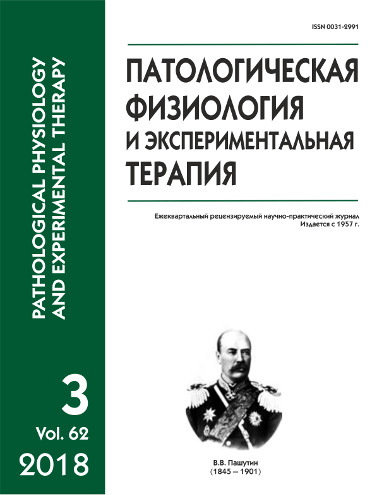Репаративные процессы при алло- и ксеноимплантации внеклеточного матрикса кости
DOI:
https://doi.org/10.25557/0031-2991.2018.03.60-66Ключевые слова:
репаративные процессы; внеклеточный матрикс кости, костная ткань; алло- и ксеноимплантация; сыворотка крови; биохимическое исследование; гистологическое исследованиеАннотация
В настоящее время потребность в костно-пластическом материале возрастает при проведении реконструктивно — восстановительных операций на костной ткани в травматологии и ортопедии, челюстно-лицевой хирургии, костной онкологии и в других случаях хирургической практики. Среди имплантационных материалов на основе костной ткани лидирующее место занимают импланты ауто- и аллогенного происхождения. Аутогенные импланты — лучшие с биологической точки зрения, но их достойной альтернативой являются материалы из ксенокости в силу своей доступности и биосовместимости. Цель исследования — изучение репаративных процессов в зоне регенерации при алло — и ксеноимплантации материала, полученного из костной ткани, в полуциркулярный дефект диафиза бедренной кости крыс. Материалы готовили по одинаковой технологии. Методика. Биохимические и морфологические исследования проведены на 18 крысах-самцах линии Вистар в возрасте 6—8 месяцев. Животные были распределены на 3 группы. Первая группа (n = 6) — ксеноимплантация, вторая (n = 6) — аллоимплантация, третья контроль (n = 6) — здоровые животные. Изучены биохимические показатели сыворотки крови на 60-е сут. эксперимента: активность общей щелочной фосфатазы и тартратрезистентного изофермента кислой фосфатазы, содержание кальция, фосфата, общего белка, С-реактивного белка, белковых фракций и проведены морфологические исследования. Результаты и обсуждение. Биохимические исследования белковых фракций и С-реактивного белка сыворотки крови свидетельствуют об отсутствии выраженной воспалительной реакции у крыс при алло — и ксеноимплантации внеклеточного матрикса костной ткани в области дефекта метафиза бедренной кости. В обеих опытных группах отмечена активация репаративных процессов. Гистологический анализ выявил остеоинтеграцию как аллогенных, так и ксеногенных фрагментов губчатой кости, имплантированных в область полуциркулярного дефекта бедренной кости крыс. При использовании аллоимплантатов отмечен более высокий темп их биодеградации и органотипическая перестройка оперированного участка кости реципиента. Во всех случаях показано отсутствие реакции отторжения либо инкапсуляции импланта и признаков воспаления в тканях реципиента. Полученные нами данные биохимического и гистологического исследований являются доказательством возможности использования внеклеточного матрикса ксеногенной природы для замещения дефектов костной ткани.Загрузки
Опубликован
2018-10-05
Выпуск
Раздел
Оригинальные исследования
Как цитировать
[1]
2018. Репаративные процессы при алло- и ксеноимплантации внеклеточного матрикса кости. Патологическая физиология и экспериментальная терапия. 62, 3 (Oct. 2018), 60–66. DOI:https://doi.org/10.25557/0031-2991.2018.03.60-66.













